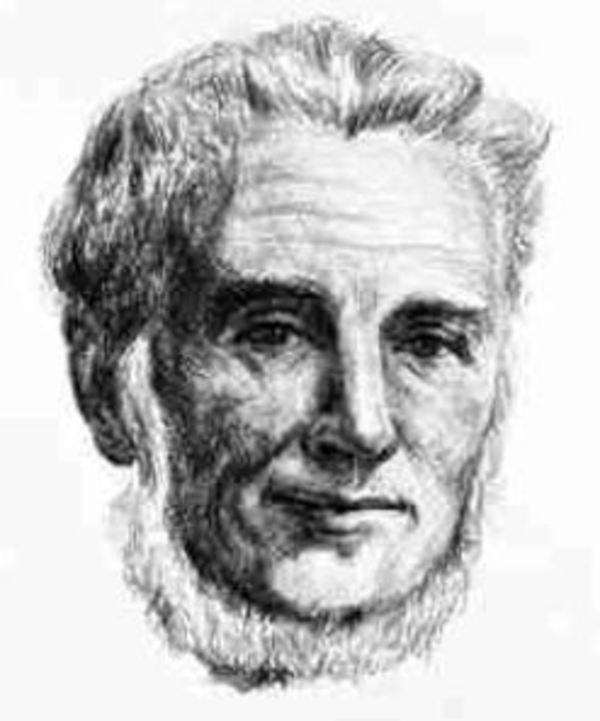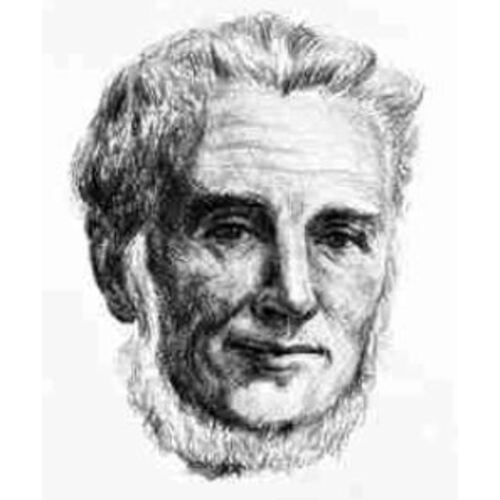
Source: Link
FOULIS, ROBERT, engineer, artist, entrepreneur, and inventor; b. 5 May 1796 in Glasgow, Scotland, son of Andrew Foulis, a Glasgow publisher, and his wife whose maiden name was Dewar; m. first, in Belfast, Elizabeth Leatham, and they had one daughter; he also had two surviving children by a second marriage; d. 28 Jan. 1866 in Saint John, N.B.
Robert Foulis was a contemporary of Michael Faraday, the famous English scientist, and those who knew them both as young men considered Foulis the greater genius. Foulis studied surgery at the University of Glasgow but abandoned the medical field because of ill health and apprenticed to an engineer. As a journeyman he went to Belfast where he worked as a painter and where he met his first wife; she died shortly after their daughter’s birth in 1817. Foulis decided to begin a new life in America and intended to settle in Ohio. Rough weather forced his ship ashore on the coast of Nova Scotia and he made his way to Halifax in 1818 where some Scottish friends persuaded him to remain. He earned a living at Halifax as a portrait painter and as teacher of painting at “Mrs. Burns’ English and Commercial Academy.” In 1822 he moved to Saint John where he worked as a civil engineer.
A man of many talents, in 1825 he started New Brunswick’s first iron foundry at Saint John (which he sold in 1835), and in 1826 he was commissioned by the provincial government to survey the Saint John River from Fredericton to Grand Falls. He was also responsible for fitting up the John Ward, the second steamboat to ply the river. Active in the cultural activities of his adopted city, he was a frequent lecturer in chemistry and other subjects at the Saint John Mechanics’ Institute, which he helped to organize. In 1838 he established a “School of Arts” to bring educational opportunities to the residents of Saint John and to supplement his income. The school’s programme included “instruction of Youth in the rudiments of Mechanical and Experimental Philosophy and the Fine Arts; [and] for instructing by popular Lectures and Experimental Illustration, an Evening Class for Artizans, where the practical application of the Sciences to the useful Arts will be demonstrated.”
Foulis is credited with inventing an apparatus for decomposing coal to make illuminating gas. He is also said to have invented an electric dynamo, but to have made no use of the invention. In 1853 he conceived the idea for what was undoubtedly his greatest invention, a steam foghorn, and a year later a committee of the New Brunswick legislature reported favourably on this invention. From time to time between 1854 and 1859 he agitated for the installation of his fog-horn on Partridge Island in Saint John harbour, but no action was taken by the assembly. In 1859 T. T. Vernon-Smith obtained Foulis’ plans and was granted permission to erect a steam foghorn, the first to be installed anywhere in the world, on the island. Foulis petitioned the assembly and in 1864 the house passed a resolution recognizing Foulis’ claim as inventor of the foghorn and of the coded system of telegraphing associated with its use. However, this was the extent of the recognition granted to him and he has not been credited with the invention, which is ranked by later historians as one of the most outstanding in the development of navigation aids.
The coded steam fog-horn was evidently later patented by an American who realized its financial potential. Business naïveté or preoccupation with other projects may explain why Foulis failed to patent such an obviously important invention. He died in poverty in Saint John in 1866. He had been truly a man of great genius, but unfortunately the Saint John environment did not nurture scientific and technological endeavour. Exchange of ideas with peers and financial support – the necessary stimulants for the development of scientific excellence – were lacking.
N.B. Museum, Ganong ms coll., Scrapbooks, 3, “In the time of Gesner” (undated newspaper article). PAC, MG 27, I, D15, Robert Foulis to S. L. Tilley, 5, 17, 23 Feb. 1859. N.B., House of Assembly, Journals, 1838, 1854, 1864. Morning News (Saint John, N.B.), 29 Jan. 1866. Hutchinson’s New Brunswick directory, for 1865–66 . . . , comp. Thomas Hutchinson (Montreal, [1865]). J. J. Brown, Ideas in exile: a history of Canadian invention (Toronto and Montreal, 1967). P. G. Hall, “A misplaced genius,” New Brunswick Magazine (Saint John), I (1898), 247–56.
Cite This Article
Charles MacKinnon, “FOULIS, ROBERT,” in Dictionary of Canadian Biography, vol. 9, University of Toronto/Université Laval, 2003–, accessed December 12, 2025, https://www.biographi.ca/en/bio/foulis_robert_9E.html.
The citation above shows the format for footnotes and endnotes according to the Chicago manual of style (16th edition). Information to be used in other citation formats:
| Permalink: | https://www.biographi.ca/en/bio/foulis_robert_9E.html |
| Author of Article: | Charles MacKinnon |
| Title of Article: | FOULIS, ROBERT |
| Publication Name: | Dictionary of Canadian Biography, vol. 9 |
| Publisher: | University of Toronto/Université Laval |
| Year of publication: | 1976 |
| Year of revision: | 1976 |
| Access Date: | December 12, 2025 |



